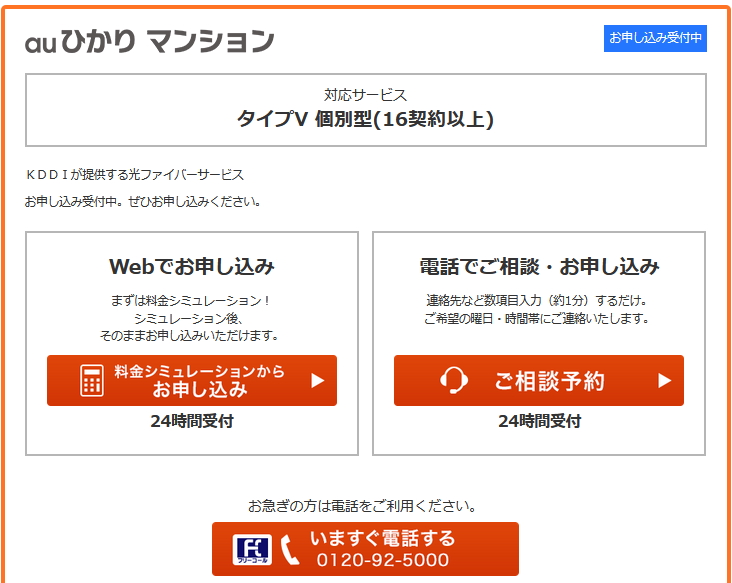
So you’ve found your own place in Japan! But before you head down to the local Nitori to furnish your place, there is one crucial step. Access to the world wide web!
Don’t panic though, settings up your home internet connection in Japan is much easier than signing an apartment contract, and you already managed to do that. Read on to learn what you need to do to get home internet in Japan. This article will show you how to find the best service providers, what you should to expect to pay, and how long the process is likely to take.
Internet Terminology
Whilst we will do our best to use English services, it won’t hurt to familiarize ourselves with a few keywords in Japanese.
光 (hikari) fiber optic. Whilst there are other connection types available in Japan, those are gradually being phased out. They are also slower and often times the same price, or even more expensive.
モバイル (mobile) mobile internet. These are wireless routers that connect to the local celluar network and offer about the same speed as your phone. Good enough for casual browsing but too slow for video or gaming.
無線 (musen) Wireless. This refers to Wi-Fi as opposed to mobile (4G, LTE etc.)
フレッツ(Flets) = Fiber connection over the NTT hardware. The most common connection type, so sometimes congestion can occur.
Nuro = Fiber connection through Sony. Yes! they do Internet here too.
一戸建て (Ikkodate) = a standalone house.
マンション(manshion)= an apartment/ housing complex etc.
Choosing your ISP
Before you can choose an ISP, you will need to make sure they can service your area. NTT’s Flets is practically available across the whole country. Sony Nuro is more limited to Tokyo and the surrounding areas.
An ISP will also offer two distinct prices. One is for a “mansion” type dwelling, and the other is for a “House”. The house is slightly more expensive, but you will also be less likely to experience congestion.
| Service Provider | Line Provider | Type | Speed | Monthly | Connection Fee | Discount | English Application | Website |
|---|---|---|---|---|---|---|---|---|
| Asahi Net | NTT Flets | Flets Fiber | 1 Gbps | House: ¥7128 Mansion: ¥5005 | ¥19,800 | 1 Year ¥858 Discount | Yes | asahi-net.jp/en |
| Asahi Net | NTT Flets | Wireless | 4G LTE | ¥4850 | ¥2000 | 3 Months Free Connection Fee | Yes | asahi-net.jp/en/service/mobile/wimax2plus/ |
| OCN | NTT Flets | Flets Fiber | 1 Gbps | House: ¥6200 Mansion: ¥4700 | ¥7600 ~ ¥18,000 | ¥5100/month With 2yr Contract | No | ntt.com/personal/services/internet/hikari/select.html |
| Sony Nuro | Sony Nuro | Fiber | 2 Gbps | House: ¥4733 Mansion: ¥2500 | ¥43,000 | No Fee With 3yr Contract | No | nuro.jp |
| Softbank | NTT | Fiber | 1 Gbps | House: ¥5200 Mansion: ¥3800 | ¥24,000 | n/a | No | softbank.jp/en/internet |
| Softbank | NTT | Wireless | 350mbps | ¥3800 | ¥4880 | -1650 for 12 month | No | softbank.jp/en/internet |
| AU | KDDI | Fiber | 1 Gbps | House: ¥6800 Mansion: ¥4900 | ¥30,000 (almost always discounted to 0 yen) | -1100 yen with a 2 year contract | Yes, via English phone or select AU stores | au.com/english/internet/auhikari/ |
Line providers
There are three competing line providers in Japan. A line provider owns and maintains the physical cabling and hardware systems to make up the internet. When using KDDI or Sony hardware, you will also receive your service through them. However, with NTT you will contract with another party for your internet access. Let’s look at the three line providers that provide home internet access in Japan.
NTT
When contracting with Flets, you will need both a contract with NTT and another with a service provider. This is because with NTT, home internet in Japan is “unbundled”. The physical hardware that makes up the internet is supplied and maintained by one company (NTT), and the service and access to the internet through that hardware is supplied by another. The hardware part is the most expensive (~5000 yen per month), and the service is usually around 500 yen. NTT also runs their own service provider, OCN. OCN is the largest service provider in Japan. So what does that actually mean for you? Essentially, under normal conditions, it doesn’t mean much! You will still receive a single bill, but the itemization will show two charges. You may also have to initially talk with the two separate companies to organize connection.
The good news is, when you contract with a service provider they can often take care of the NTT part for you.
Sony Nuro
Sony Nuro internet is the fastest internet available in Japan. If you want speed, this is the best service, bar none. However, it is still limited to select locations. You can find out if your apartment or house is serviceable by visiting the website below.
- https://www.nuro.jp/hikari/
- Click the black box “スタート”
- The type of connection available to you depends on your dwelling. Choose “一戸建て“ for a standalone house, and マンションfor an apartment.
- Enter your post code
- If you get a message with the text “NURO 光 エリア外”, then unfortunately Sony Nuro internet is not available to you.
- If the page loads and you can view a variety of plans, you are in a serviceable location, and can continue with your application.
Softbank
A competitor to NTT. The only real difference is you contract with a single company. The process is a little easier due to this. Some people claim Softbank is slower, but in fact Softbank uses the same backbone infrastructure as NTT.
AU (KDDI)
Finally, AU also offer a fiber optic service over their own hardware. AU is ranked the fastest home internet connection in Japan by Netflix statistics, so if you plan to stream a lot of 4k video, they can be a smart choice.
Similar to Sony Nuro, you will need to confirm that connection is available at your residence.

If you are able to continue the application, service is available. You will see the following page.

So what’s the difference?
Basically, we see that Sony is the fastest internet in Japan, and Softbank is the cheapest. This makes NTT the standard fare. If you want the fastest internet possible, then you should go with Sony Nuro. The application process is in Japanese, but with the help of online translation tools you should be able to complete the application. If, however you want to get things done without a headache, NTT through Asahi NET is the easiest option. They offer a full English application and service, and have English help support. Finally, Wireless is a slower and slightly cheaper option. However it’s still a valid choice if you’re not a heavy user. Another bonus is the initial fees are cheaper.
Another thing to keep in mind is that discounts often exist if you get your internet and mobile phone through the same company. If you are already contracted to for example, Softbank, you may be able to save more money by applying for your home internet in Japan through Softbank as well.
What happens after my application?
First you will receive a package about your contract in the mail. You will need to setup an installation time with the company.

The sad news is that connection can take a few weeks, or even months depending on your location and the season. The busiest time is in March/April, as this is the job season in Japan and everyone is moving homes. It’s a good idea to try to apply for your home internet in Japan well before March, if at all possible! Personally I had to wait 2 months for my current connection! If you do find yourself in such a predicament, and you absolutely NEED internet ASAP, Wireless services can be up and running in no time. The connection fee is also often waived for campaigns, so it’s also the cheaper up-front option.
Generally, you will then get a call from your service provider or NTT to set up an appointment. Depending on your residence, the NTT serviceman will do some work on the building junction box, or potentially run some wire for a standalone house. Don’t count on the serviceman being able to speak English! If they do want to run some wire, you can absolutely specify where you want the socket installed. They may try to put it somewhere that’s easy for them, but don’t be afraid to specify where you want the outlet.
Setting up
Finally, you will need to plug in your modem. In Japan they make you do this yourself, so you will need to follow the instructions carefully. Essentially, you will receive a modem in the mail. You will need to log into the modems home page and input your connection settings. Once this is done, you are ready to surf!

Now that you know how to get home internet in Japan, what are you waiting for? You can finally stop drinking too much coffee at Starbucks just to use the internet! But more importantly you can video call your friends and family back home for free!



